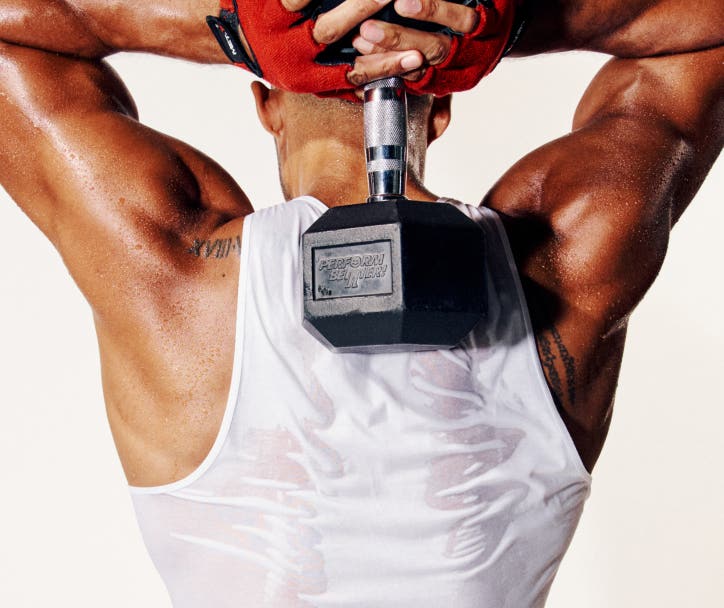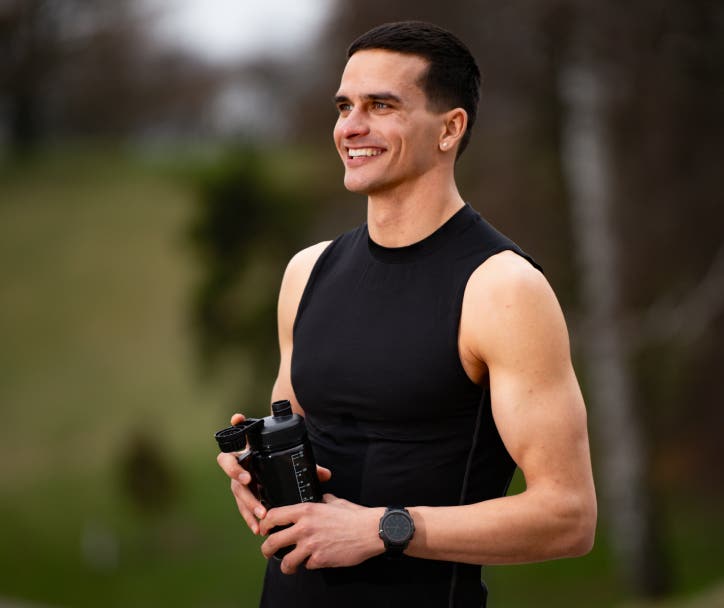It’s no secret that exercise is good for you. Beyond improving your fitness, exercise can help strengthen your muscles and bones, regulate weight, boost your mood, and support heart health. And these are only some of its many advantages.
But because exercise is so important, there’s so much (honestly, too much) information about the “right” way to work out, what you should/shouldn't be doing, and simply bogus fitness trends that have our eyes bulging.
These bogus trends tend to spread fast, far and wide, largely thanks to one key culprit: social media. Social media opens the floodgates for anyone to post just about anything online for likes, comments, and to gain followers. In other words, it doesn’t need to be backed by science. And just because something is posted online doesn’t necessarily mean it’s accurate.
In this article, we’ll debunk five bogus fitness trends and provide scientifically backed alternatives beyond the run-of-the-mill Instagram reel.
Trend #1: Spot Reduction
Spot reduction, or spot training, is the idea that working out specific muscles can reduce fat in that area of the body, such as the thigh, lower abs, or butt. A common misconception is that completing hundreds of crunches per day will result in washboard abs or that dedicated leg exercises will reduce the fat around your hips and thighs. This just isn’t the case.
For fat loss to happen, there needs to be a calorie deficit, so you are burning more calories than you’re eating. When you exercise and/or eat less, stored fat is released as an energy source. But fat can be stored around your organs (invisible) as well as underneath your skin (visible).
Where the stored fat is taken from for energy isn’t determined by the muscle groups you exercise but by factors outside of your control, such as hormones and genetics. Research shows that your genetic makeup influences the effectiveness of certain weight loss regimes.1
A 2013 study examined the effects of a single-leg resistance training program on total body and regional tissue composition in 7 men and 4 women for 12 weeks. The results showed that although the program reduced overall fat mass, this didn’t occur in the targeted area.2
HIIT for weight loss
One effective weight loss strategy is high-intensity interval training (HIIT) with research suggesting it may be more effective at reducing subcutaneous and abdominal fat than other exercise methods.3
Donnelly et al., (2013) also demonstrated that aerobic exercise can result in clinically significant weight loss in men and women.4 Over the 10-month study, the weight loss for the 400 kcal/session group was between 3.9 ± 4.9 kg and 5.2 ± 5.6 kg for the 600 kcal session group.
A combination of diet, regular exercise, and interval training can help to sculpt and tone your entire body.
Trend #2: Muscle confusion
The trend of muscle confusion is the idea that you can shock your muscles into growing or looking leaner by mixing up your workouts or how you train. Unfortunately, there’s no science behind “workout hopping” or switching from station to station in the gym without a real strategy in place. Instead, it can limit your fitness journey, not least progressive overload.
Progressive overload is gradually increasing the weight, frequency, or repetition in your strength training regime to gain strength and muscle over time. The more you repeat an exercise, the more your muscles get used to it, which is why they need to be challenged by increasing the load or frequency. But if you’re continuously switching exercises, it’s difficult to stimulate this kind of growth.
If you want to see progress, you should remember the SAID principle. This principle highlights the concept that you improve at what you train for. So, if you want to build muscle, then you’ll need to lift weights heavy enough to promote gains. If your focus is building leg strength, you might do the following:
- Pick a lower body exercise that’s important for strength
- Test what you can currently do
- Choose your rep range and number of sets specific to your goal
- Set a time to review your ability
- If progress stalls, this is where you can try a different version of the exercise

Trend #3: Sweating = results
There’s a common myth floating around gyms that the more you sweat, the better your workout. This simply isn’t true. When you exercise, your body produces sweat to cool itself down,6 it’s not an exercise efficiency indicator.
If you really want to gauge the success of your cardio-based workout, wearing a heart monitor or a device that measures your heart rate is a more accurate option. Use this to track which heart rate zone you’re in so that you can effectively train for your goals. If you keep a record of your measurements, you’ll be able to determine your progress over time.
For strength-based training, measuring and increasing the number of reps and weight over time is a good indicator of progress.
Trend #4: Detox for big results
You’ve likely heard about people turning to a detox diet to lose weight for a major life event or upcoming holiday. Although these diets may promote short-term weight loss, it’s likely that you’ll quickly regain any lost weight. There is very little scientific evidence demonstrating their effectiveness,7 and there are questions about whether detoxes are even needed.
That’s because your body naturally detoxifies itself. Yep, you read that correctly – our bodies are pretty darn smart and can detox without the need for special diets, teas, juices, or supplements. A big thanks is to the liver, or the detox center of the body, filtering and detoxifying harmful substances,8 including cellular debris, pathogenic bacteria, alcohol, drugs, hormones, food waste products, and even old red blood cells.9 Once toxic waste products are made harmless by the liver, they can then be removed from the body via sweat, urine, and feces.
Rather than following a detox diet which your body doesn’t need (and neither does your wallet), you can help to support your liver and ensure the detox process runs smoothly by:
- Eating a well-balanced diet
- Not smoking
- Limiting alcohol consumption
- Getting good, restful sleep
- Drinking adequate amounts of water10

Trend #5: Juice cleanses for weight loss
Juice cleanses promote the intake of nutrients without the need to eat whole fruits and vegetables. Many people believe this fad is a good way to lose weight, but although you may lose weight quickly in the short term because of the calorie deficit, once you go back to a normal diet, it’s likely you’ll put the weight back on.11
This yo-yo effect can have long-term repercussions on your weight or fitness goals. Instead, the best way to ensure your body is getting all the nutrients and energy it needs is to eat whole foods and follow a well-balanced diet.
What’s the best exercise trend to reach your fitness goals?
That’s easy. Find the approach that’s best for you. We are all unique, so choose the one that you enjoy the most, promotes progression, and can stick to consistently.
Overall, fitness fads and myths can set you up to fail before you’ve even started on your journey. But with the right information, guidance, and ideal success measures, you’ll love working out and see real, incremental, long-lasting results.
Sources
[1] Cha, S. et al. (2018) ‘Impact of genetic variants on the individual potential for body fat loss’, Nutrients, 10(3), p. 266. doi:10.3390/nu10030266.
[2] Ramírez-Campillo, R. et al. (2013) ‘Regional fat changes induced by localized muscle endurance resistance training’, Journal of Strength and Conditioning Research, 27(8), pp. 2219–2224. doi:10.1519/jsc.0b013e31827e8681.
[3] Boutcher S. H. (2011). High-intensity intermittent exercise and fat loss. Journal of obesity, 2011, 868305. https://doi.org/10.1155/2011/868305
[4] Donnelly, J. E., Honas, J. J., Smith, B. K., Mayo, M. S., Gibson, C. A., Sullivan, D. K., Lee, J., Herrmann, S. D., Lambourne, K., & Washburn, R. A. (2013). Aerobic exercise alone results in clinically significant weight loss for men and women: midwest exercise trial 2. Obesity (Silver Spring, Md.), 21(3), E219–E228. https://doi.org/10.1002/oby.20145
[5] Imai, A., Kaneoka, K., Okubo, Y., & Shiraki, H. (2014). Comparison of the immediate effect of different types of trunk exercise on the star excursion balance test in male adolescent soccer players. International journal of sports physical therapy, 9(4), 428–435.
[6] Lindsay B. Baker (2019) Physiology of sweat gland function: The roles
of sweating and sweat composition in human health, Temperature, 6:3, 211-259, DOI:
10.1080/23328940.2019.1632145
[7] Klein, A. V., & Kiat, H. (2015). Detox diets for toxin elimination and weight management: a critical review of the evidence. Journal of human nutrition and dietetics : the official journal of the British Dietetic Association, 28(6), 675–686. https://doi.org/10.1111/jhn.12286
[8] Grant D. M. (1991). Detoxification pathways in the liver. Journal of inherited metabolic disease, 14(4), 421–430. https://doi.org/10.1007/BF01797915
[9] Detoxification (no date) RLO: The Physiology of the Liver. Available at: https://www.nottingham.ac.uk/nmp/sonet/rlos/bioproc/liverphysiology/page_six.html (Accessed: 18 March 2024).
[10] Guan, Y. S., & He, Q. (2015). Plants Consumption and Liver Health. Evidence-based complementary and alternative medicine : eCAM, 2015, 824185. https://doi.org/10.1155/2015/824185
[11] Obert, J., Pearlman, M., Obert, L., & Chapin, S. (2017). Popular Weight Loss Strategies: a Review of Four Weight Loss Techniques. Current gastroenterology reports, 19(12), 61. https://doi.org/10.1007/s11894-017-0603-8